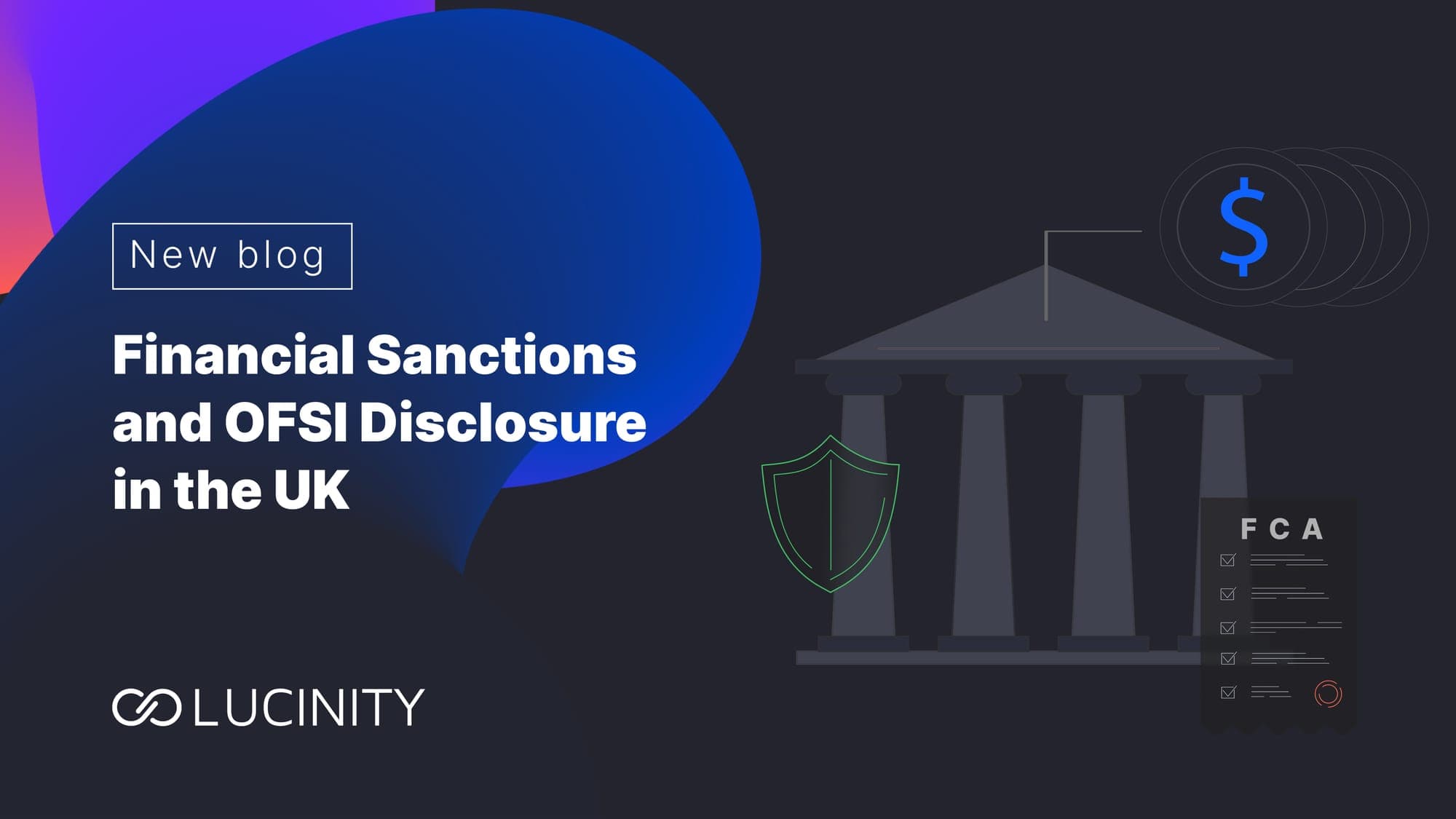A Guide to Global Financial Intelligence Units (FIUs)
Discover the main Financial Intelligence Units (FIUs) across the globe and understand their role in financial crime prevention.
Financial Intelligence Units (FIUs) serve a critical role in safeguarding our economies from financial crimes, including money laundering and terrorism financing. Despite their efforts, the battle against financial crime is continually evolving, with criminals adopting new strategies to bypass security measures.
According to a United Nations Office on Drugs and Crime report, up to 5% of the global GDP is subject to money laundering each year. This represents 800 billion - 2 trillion USD. This statistic underscores the necessity for finance professionals to deepen their understanding of the role performed by FIUs as a bridge between private and public institutions.
In this blog, we explore the purpose of FIUS, the different types of FIUs, and the challenges and opportunities they face.
The Basics of Financial Intelligence Units (FIUs)
Financial Intelligence Units (FIUs) are specialized government agencies tasked with a critical mission: to act as national centers for the receipt, analysis, and dissemination of financial information concerning suspected money laundering, terrorist financing, and other economic offenses.
Their function is crucial in the ecosystem of global financial regulation and compliance. FIUs often collaborate through networks like the Egmont Group – an international body that fosters cooperation and information exchange among 170 FIUs worldwide. This collaboration is critical, given the global nature of financial crime, where illicit funds often cross multiple borders.
Understanding how FIUs work is critical for FinCrime prevention professionals, as compliance programs are often designed to align with FIU mandates. Moreover, this compliance ensures that institutions adequately identify, report, and respond to suspicious activities.
Core Functions of FIUs
To gain a better understanding of FIUs, we must understand their key functions in chronological order, which mimics the process known as the “Intelligence Cycle”:
- Direction- In coordination with other stakeholders e.g. Regulators, Law Enforcement, Judiciary, FIUs determine and prioritize the areas they should focus on in terms of resources, data collection, and analysis
- Collection of Information- FIUs receive reports from financial institutions and other entities (such as banks, insurance companies, and money service businesses) on suspicious transactions that might indicate financial crime.
- Analysis- They analyze this data to identify trends, patterns, and specific transactions that warrant further investigation. This process often involves complex data analysis techniques and sophisticated technology.
- Dissemination- Once a potential threat or illegal activity is identified, FIUs disseminate this information to relevant law enforcement agencies for further investigation and potential prosecution. They also design mandates for financial security to guide compliance programs.
While these core functions are mostly consistent, FIUs have been classified into four types by Egmont.
Types of FIUs
The structure and operation of FIUs can vary significantly across different jurisdictions, but they generally fall into one of the following models:
- Administrative FIU- Operates independently or under the umbrella of a larger regulatory agency, focusing primarily on analyzing and processing reports.
- Law Enforcement FIU- Integrated within a law enforcement agency, enabling a direct link to investigative resources and legal action.
- Judicial or Prosecutorial FIU- Functions under the authority of the judicial branch, often involved directly in the legal proceedings against financial crimes.
- Hybrid FIU- Combines elements of the above models, adapting to specific national needs and legal frameworks.
Egmont recognizes another classification for other types of FIUs that don’t fall into these four categories, such as FIUs that are part of a central bank or a ministry of finance.
Key FIUs Around the Globe
With about 170 FIUs across several countries, the list of Financial Intelligence Units is vast. However, below we list some key players:
- United States- Financial Crimes Enforcement Network (FinCEN): FinCEN leads the U.S.'s efforts in analyzing financial transactions to combat domestic and international money laundering, terrorist financing, and other financial crimes.
- United Kingdom- National Crime Agency (NCA): The NCA's role encompasses a broad spectrum of financial crime prevention, including money laundering and fraud.
- Australia- Australian Transaction Reports and Analysis Centre (AUSTRAC): This agency is pivotal in Australia's fight against financial crime, scrutinizing transactions for any suspicious activities.
- India- Financial Intelligence Unit (FIU-IND): FIU-IND plays a significant role in India's battle against money laundering and terrorism financing.
- Canada- Financial Transactions and Reports Analysis Centre of Canada (FINTRAC): FINTRAC’s mission includes the detection, prevention, and deterrence of money laundering and the financing of terrorist activities.
- China’s Anti-Money Laundering Monitoring and Analysis Center (CAMLMAC)- CAMLMAC is part of the People’s Bank of China, China’s central bank. It cooperates with other domestic and international authorities to counter financial crime.
- European Union- Various National Units: The European Union does not have a single FIU, but rather a network of national FIUs that cooperate and exchange information. As of 2023, there are some initiatives and proposals to move towards a joint EU FIU.
In addition to these major Financial Intelligence Units, several regions have formed notable units that are associate members of the global Financial Action Task Force (FATF). These include:
- Asia-Pacific- Countries like Singapore and Japan have robust FIUs that play critical roles in the Asia-Pacific region's fight against financial crimes.
- Middle East and Africa- Nations such as the United Arab Emirates and South Africa have established FIUs to combat the increasing complexity of financial crimes in these regions.
- Latin America- Countries like Brazil and Mexico have developed specialized units to address regional challenges related to money laundering and terrorism financing.
It’s important to address a common confusion at this point, and that’s the confusion between an FIU and the FATF.
The Financial Action Task Force (FATF) is an inter-governmental body that sets the international standards for combating money laundering, terrorist financing, and proliferation financing. FIUs may cooperate with the FATF and its members through various mechanisms, such as the Egmont Group, the FIU.net platform, and bilateral or multilateral agreements. However, there are many countries that are not members of the FATF but have formed their own FIUs e.g. The Channel Islands (Jersey and Guernsey).
The Challenges Faced by FIUs
Despite their crucial role, FIUs face several challenges, necessitating continuous adaptation and collaboration among global FIUs. Let’s discuss some key challenges FIUs deal with:
- Evolving Financial Crimes- As financial criminals continually adapt their methods, FIUs must constantly evolve their strategies and tools to stay ahead. This includes adapting to new forms of digital currency and online financial activities.
- Data Sharing- FIUs exchange data from regulated institutions and other stakeholders such as Law Enforcement and the Judiciary. However, they often face challenges due to the lack of proper systems for sharing this data. This issue can force them to rely on slow, manual methods or, in some situations, prevent them from sharing data at all.
- Technological Advancements- With the rapid advancement of fintech, FIUs are challenged to keep pace with the technological changes in the financial sector. They need to understand and leverage new technologies to effectively monitor and analyze financial transactions.
- Globalization and Cross-Border Transactions- The increasing volume of cross-border financial transactions complicates the detection and investigation of financial crimes. FIUs need to navigate different jurisdictions, legal frameworks, and international regulations.
- Resource Constraints- Many FIUs operate with limited resources and face challenges in terms of funding, technology, and skilled personnel. This can hinder their ability to effectively analyze large volumes of financial data and conduct thorough investigations.
In the face of these challenges, FIUs are consistently evolving, embracing new technologies, and refining their strategies. By proactively addressing these hurdles, FIUs can enhance their effectiveness, fostering a safer and more transparent financial environment globally.
FIUs and the Future of Financial Compliance
The future of financial compliance is increasingly intertwined with technology. AI and machine learning, for instance, are becoming integral in analyzing vast amounts of financial data, helping FIUs in detecting complex patterns indicative of financial crimes. Let’s consider some important trends in more detail:
- Integration of Advanced Technologies- The future of financial compliance is closely tied to the integration of technologies like AI, machine learning, and blockchain. These technologies can greatly enhance the analytical capabilities of FIUs.
- Enhanced Data Analysis- The use of big data analytics will become more prevalent in FIUs, allowing for more effective monitoring and detection of complex financial crimes.
- Collaboration with FinTech- Increasing collaboration between FIUs and fintech companies can lead to the development of innovative tools and solutions for financial crime prevention.
- Global Standardization- There will be a growing trend towards the standardization of regulations and practices across FIUs globally, facilitating better cooperation and more effective combat against financial crimes.
- Customer Due Diligence- FIUs will likely enhance their customer due diligence processes, using technology to verify the identity and background of customers and beneficial owners.
- Regulatory Sandboxes- FIUs may create advanced regulatory sandboxes to test and evaluate new technologies and solutions for financial compliance.
While these are likely developments, they are just a few of the possibilities for future advancements against financial crimes and toward effective financial compliance. With the rapid pace of technological development, this area will remain highly dynamic.
Key Takeaways
FIUs are not just regulatory bodies; they are crucial components in the international financial system. Their work ensures the integrity and stability of global financial markets by preventing illicit activities that can undermine economies and endanger security. As finance professionals and businesses, it is crucial to ensure compliance with their mandates and follow their lead in the fight against FinCrime.
At Lucinity, we pride ourselves in offering solutions that align with the objectives of these FIUs, employing AI-driven technology to enhance compliance and streamline processes. Our Customer Intelligence, Case Manager, and Luci Copilot are designed to support the efforts of financial institutions in meeting the stringent requirements set forth by these global entities.
Download our infographic on Demistifying FIUs:



